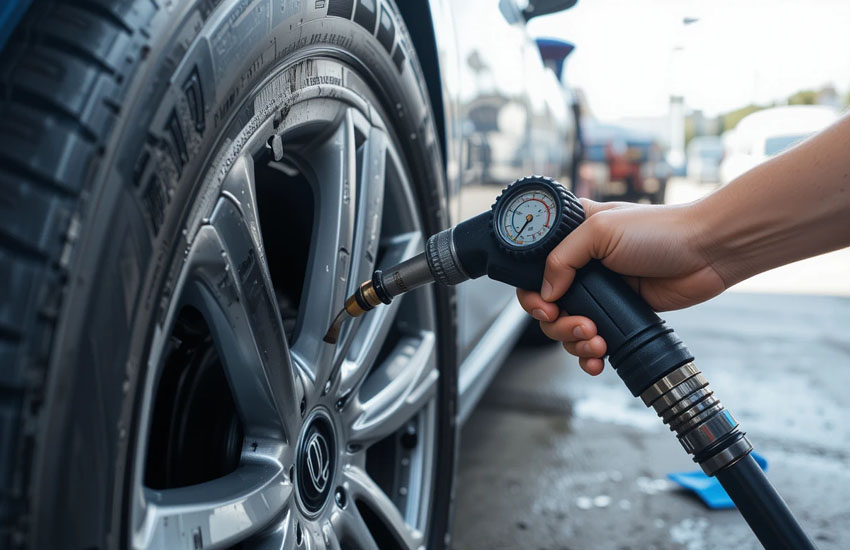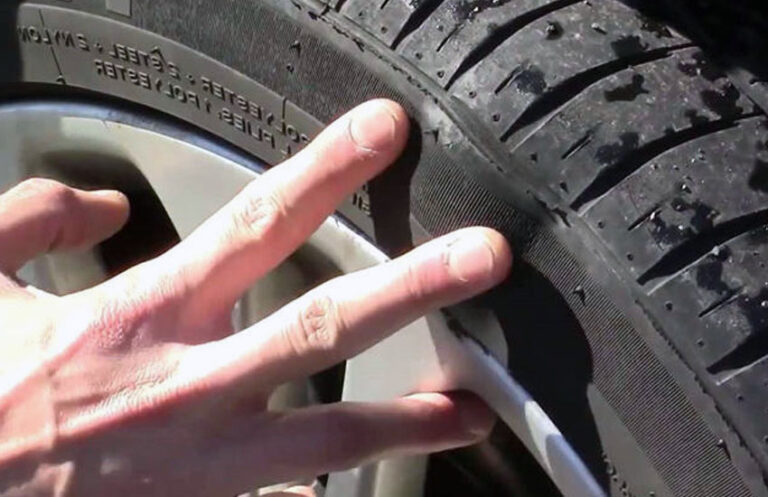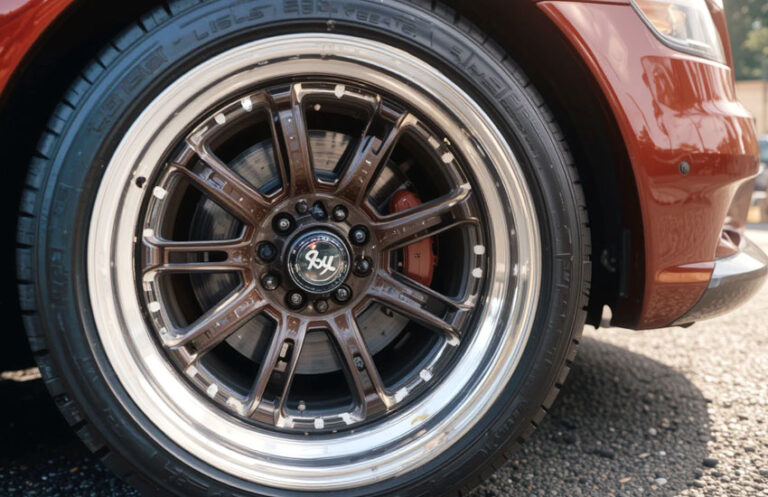As an Amazon Associate, I earn from qualifying purchases at no extra cost to you.
How Can I Put Air in a Tire With a Broken Valve Stem? Quick Guide
Have you ever been out on a road trip, only to find your tire low on air? Panic sets in, right? But what if you notice that the valve stem is broken? You know, that little metal piece where you usually add air to your tire? Well, don't stress just yet. In this article, I'll walk you through everything you need to know about dealing with a broken valve stem and how to still get that tire pumped up. Whether you're stranded on the side of the road or at home, I've got you covered. Let's jump right in!

Understanding the Problem: What Is a Broken Valve Stem?
What Exactly Is a Valve Stem?
First things first, let's break it down. The valve stem is the tiny metal or rubber part on your tire where you add air. It’s attached to the inner tube of the tire or the tire itself, depending on the type. Think of it like the gateway to your tire's air supply. When you twist the cap off, it's the valve stem you're interacting with.
Now, when it breaks or gets damaged, it becomes a big problem. Without a functioning valve stem, your tire can't hold air properly, and your car will be in no condition to drive—especially if the stem is leaking air. So, understanding how it works is the first step to solving the issue.
Why Do Valve Stems Break?
Valve stems don't just break for no reason. They can get damaged from a variety of things. Over time, rubber valve stems can dry out and crack due to exposure to sunlight, road salts, and general wear. Extreme temperatures or hitting a pothole can also cause them to break. Sometimes, faulty installation or just bad luck can lead to a broken valve stem, but no matter the reason, you'll need to act fast.
Understanding what caused the damage can help you avoid making the same mistake again. For example, if you notice that your valve stem is cracked from too much sunlight, it might be time to check if it’s time to replace it before you run into trouble.
The Impact of a Broken Valve Stem
The damage to your valve stem might not be instantly noticeable, but over time, you'll see a few tell-tale signs. A slow leak, a flat tire, or an inability to inflate the tire properly are all clues. If the valve stem is completely broken, no matter how hard you try, you won't be able to add any air to the tire. That's when the real trouble begins. So, knowing what to do next is crucial.
Assessing the Damage: Can You Repair or Replace the Valve Stem?
How to Check for Valve Stem Damage
When you notice something odd with your tire—maybe it's losing air faster than usual or it's completely flat—it's time to check the valve stem. A good visual inspection is usually enough to tell if the stem is broken. Look for cracks, bends, or any damage that might prevent the valve from functioning. Sometimes, if the damage isn't obvious, you might notice air slowly escaping when you try to add air with a pump or air compressor.
If you can't see any visible damage but suspect there's a problem, you can also test it by adding some soapy water to the valve stem. If you see bubbles, then there's a leak, and the valve stem is damaged.
Repair vs. Replacement: What's the Best Option?
So, now you know the valve stem is broken. But do you need to replace it, or is there a way to fix it temporarily? Let's look at both options:
Temporary Repair: If you’re stuck somewhere far from home or at a time when a professional repair isn't available, you might need to patch the valve stem temporarily. Some people use a rubber plug or even try to use a tire repair kit to seal up the valve and prevent the air from leaking out. While this can buy you some time, it's not a permanent solution.
Permanent Replacement: In most cases, the valve stem needs to be replaced. This isn't a difficult job, but it's one that requires the right tools. If you’re comfortable doing it yourself, you can buy replacement valve stems at most auto parts stores, and the procedure usually involves removing the tire, replacing the stem, and resealing it. If you're not sure about handling this yourself, it's a good idea to visit a tire shop for a replacement.
When to Replace the Entire Tire
While it's rare, sometimes a broken valve stem might be a sign of a bigger problem. If the stem is part of a larger tire issue, such as a worn-out tire or one that's been damaged in other ways, replacing the entire tire may be the best solution. If the tire has been patched before or has significant damage elsewhere, trying to repair the valve stem might not solve the problem in the long run.
Temporary Solutions: How to Add Air to a Tire with a Broken Valve Stem
Step 1: Locate the Broken Valve Stem
Before doing anything, make sure the valve stem is the issue. Once you confirm the damage, take note of how bad it is. If it's just a minor crack, you might be able to do a quick fix. But if the stem is completely detached or cracked severely, you'll need to think about other options.
Step 2: Use a Rubber Plug or Sealant
If you’re in a bind and need to get some air in the tire temporarily, you can use a rubber plug or a tire sealant. These products can be found at most auto stores and work by sealing the damaged valve stem. Simply insert the plug into the valve and follow the instructions. This should stop the air from leaking out long enough for you to get to a shop or back home.
Step 3: Use a Tire Repair Kit
Another option is to use a tire repair kit, which typically includes a few basic tools: a tire plug, a reamer, and an insertion tool. You'll first need to deflate the tire completely, then use the reamer to clear out any debris or dirt inside the valve. After that, insert the tire plug to seal the hole or crack. This method will give you enough time to drive the vehicle to a professional tire repair shop.
Step 4: Inflate the Tire
Once you've plugged up the broken valve stem, you'll need to inflate the tire. Using a portable air compressor or a hand pump, you can begin adding air slowly. If the tire is still leaking air, it may not be sealed completely, so keep an eye on it. Keep inflating until you reach the proper tire pressure.
Step 5: Drive Cautiously
After inflating the tire, it's essential to drive cautiously and not push your vehicle too hard. The temporary fix is just that—a temporary solution. You'll want to get your tire properly repaired or replaced as soon as possible.

Long-Term Fix: Replacing or Repairing the Broken Valve Stem
How to Replace a Broken Valve Stem
Now, if you're ready to fix the problem for good, it's time to replace that valve stem. Here's a simple breakdown of how you can do it yourself:
- Remove the Tire: First, you'll need to remove the tire from the vehicle. This requires lifting the car, usually with a jack, and then taking off the wheel. Make sure the car is secure before starting.
- Deflate the Tire: Once the tire is off the vehicle, release all the air. This can be done by pressing down on the valve stem and letting all the air escape.
- Remove the Old Valve Stem: If your valve stem is attached to a separate inner tube (which is more common in bicycles and older vehicles), you can simply remove it. If it's a part of a tubeless tire, you'll need to carefully pry out the valve stem with a special tool.
- Insert the New Valve Stem: Place the new valve stem into the tire, ensuring that it fits snugly. For tubeless tires, you might need to apply a bit of tire sealant to ensure it doesn't leak.
- Reinflate the Tire: After the new valve stem is in place, it's time to inflate the tire again. Use an air compressor or a hand pump to add air until the tire reaches the recommended pressure.
- Reinstall the Tire: Finally, put the tire back on the vehicle, secure it, and make sure everything is tight. Lower the car, and you're good to go!
Professional Repair or Replacement
If you're not comfortable replacing the valve stem on your own, or if you find that the tire is too damaged for a DIY fix, taking the tire to a professional is always the best option. Tire shops have the right equipment and experience to replace the valve stem and ensure your tire is fully functional.
Frequently Asked Questions
Is it safe to drive with a broken valve stem?
Driving with a broken valve stem is not safe, as it can cause air to leak from the tire, leading to low tire pressure. This can affect your vehicle's handling and increase the risk of a blowout. It's best to repair or replace the valve stem before driving.
Can I temporarily fix a broken valve stem?
Yes, you can temporarily fix a broken valve stem using rubber plugs, tire sealant, or a tire repair kit. However, these are not permanent solutions, and you should replace the valve stem as soon as possible.
Do I need to replace the entire tire if the valve stem is broken?
Not necessarily. In most cases, you can replace just the valve stem without needing to replace the entire tire. However, if there are other issues with the tire, such as significant damage, you may need a full replacement.
Is it hard to replace a valve stem?
Replacing a valve stem can be a bit tricky, especially if you're not familiar with tire repairs. It involves removing the tire, deflating it, and properly installing a new valve stem. If you’re unsure, it's always a good idea to get professional help.
Can I use duct tape to seal a broken valve stem?
Duct tape might temporarily cover the broken valve stem, but it is not an effective or safe long-term solution. Use a proper tire repair kit or take your car to a professional.
Is it possible to drive to a mechanic with a broken valve stem?
If you've temporarily sealed the valve stem and inflated the tire, you may be able to drive slowly to a mechanic. However, it's important to be cautious and not drive long distances or at high speeds.
Do I need any special tools to fix a broken valve stem?
Yes, if you're replacing the valve stem yourself, you may need a few tools, such as a jack, a tire repair kit, a valve stem replacement tool, and an air compressor. If you're unsure about the process, consider taking your car to a mechanic.
Is it expensive to replace a broken valve stem?
The cost of replacing a valve stem is generally low, especially if you're doing it yourself. However, if you take your car to a tire shop, there may be an additional service fee. It’s typically less expensive than replacing the entire tire.






